2019 Los Alamos Dynamics Summer School
Contact
- Institute Director
- Charles Farrar
- (505) 665-0860
- Program Administrator
- Ellie Vigil
- (505) 667-2818
- Institute Administrator
- Vacant
Team Projects
Project Description
Mentors: Chuck Farrar, Alex Scheinker, Nick Lieven
Students: Greg Mellos, Salma Leyasi, Hannah Donajkowski
The process of implementing a damage detection strategy for aerospace, civil and mechanical engineering infrastructure is referred to as structural health monitoring (SHM). The SHM process compliments traditional nondestructive evaluation by extending these concepts to online, in-situ system monitoring on a more global scale. SHM can best be described in terms of a statistical pattern recognition paradigm. In this paradigm, the SHM process can be broken down into four parts: (1) operational evaluation, (2) data acquisition and cleansing, (3) feature selection and extraction, and (4) statistical model development for feature discrimination. Studies to date suggest that a fundamental axiom of SHM is that all damage increases the “complexity” of a system. This increase in complexity can manifest itself in terms of geometric complexity, material complexity, or information complexity encoded is sensors monitoring the structure’s dynamic response. The challenge is to determine what are the appropriate measures of complexity to be used for a given damage detection problem. This project will focus on studying the various measures of information complexity based on the concept of “entropy”. This study will begin by studying the Shannon entropy, which was developed for communications theory in the late 1940s. Since then a number of information entropy measures have been proposed in the literature for a variety of applications. They include: Komogorov-Sinai entropy, Pesin formula, permutation entropy, Renyi entropy, topological entropy, transfer entropy, spectral entropy, differential entropy, conditional entropy, relative entropy, and mutual information.Project Team
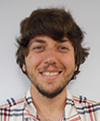
Gregory Mellos – I’m a post bachelor’s student from the University of California, Merced with a degree in Mechanical Engineering. While at UC Merced I worked on research and club projects that used 3D printers to build custom parts. One of these parts was a thermal camera mount for a small quadcopter. After graduation, I spent a year at Los Alamos studying how to detect defects in metal 3D printed parts during the build process. In my free time I hike and go to the movies.
 Salma Leyasi – I am a junior studying Biomedical Engineering at Arizona State University. On campus I work as an Undergraduate Teaching Assistant and previously as a Peer Mentor. Currently, my research involves intracellular labeling of neurons and NPCs with oxygen and pH sensing fluorescent nanoprobes. In the future, I plan to pursue a graduate degree and a career in research. In my spare time I enjoy volunteering, reading, traveling and anything outdoors.
Salma Leyasi – I am a junior studying Biomedical Engineering at Arizona State University. On campus I work as an Undergraduate Teaching Assistant and previously as a Peer Mentor. Currently, my research involves intracellular labeling of neurons and NPCs with oxygen and pH sensing fluorescent nanoprobes. In the future, I plan to pursue a graduate degree and a career in research. In my spare time I enjoy volunteering, reading, traveling and anything outdoors.
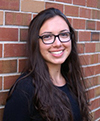 Hannah Donajkowski – I am a junior studying Mechanical Engineering at Michigan Technological University. I work as a Learning Center coach for Statics and Dynamics. I am also a Project Manager for an Enterprise team that focuses on short-term research projects with military applications. I hope to attend graduate school in the future, and am specifically interested in the application of machine learning and data analysis techniques to mechanical problems. Outside of class, I enjoy painting, hiking, and traveling.
Hannah Donajkowski – I am a junior studying Mechanical Engineering at Michigan Technological University. I work as a Learning Center coach for Statics and Dynamics. I am also a Project Manager for an Enterprise team that focuses on short-term research projects with military applications. I hope to attend graduate school in the future, and am specifically interested in the application of machine learning and data analysis techniques to mechanical problems. Outside of class, I enjoy painting, hiking, and traveling.
Project Description
Mentors: Kyle Brindley, Andy Morello, Thomas Allard
Students: Brian Evan Saunders, Liliana Haus, Jonathan Acosta
Predictions of dynamic structural responses of complex assemblies subject to engineering environments are commonly made with simulations of finite element models. The assemblies and their models often contain material, interfacial, or geometric features that produce nonlinear responses that pose challenges to finite element analysis tools. A previous study experimentally investigated the linear and nonlinear dynamic responses of a four degree-of-freedom (DOF) benchmark testbed configured for variable states of intermittent contact. This study developed a corresponding numerical, lumped-mass model and performed associated verification and validation1. The objective of this project is to extend this past work in order to develop a finite element model for the testbed, explore effects of available contact algorithms/parameters, and to identify sources of uncertainty arising from finite element techniques.Project Team
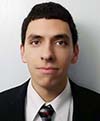 Evan Saunders – I am a Mechanical Engineering student at New Mexico State University, set to graduate May 2019 and return to NMSU in the fall for a Master’s in Mechanical Engineering. I am an officer in NMSU’s American Society of Mechanical Engineers student chapter, where we take part in NMSU and community events. Current research projects include modeling of carbon nanotubes for biomass sensing and optimizing a photon Doppler velocimetry system for my senior capstone project. Outside school, I love woodworking, hiking, playing video games, and fixing appliances, computers, vehicles—you name it.
Evan Saunders – I am a Mechanical Engineering student at New Mexico State University, set to graduate May 2019 and return to NMSU in the fall for a Master’s in Mechanical Engineering. I am an officer in NMSU’s American Society of Mechanical Engineers student chapter, where we take part in NMSU and community events. Current research projects include modeling of carbon nanotubes for biomass sensing and optimizing a photon Doppler velocimetry system for my senior capstone project. Outside school, I love woodworking, hiking, playing video games, and fixing appliances, computers, vehicles—you name it.
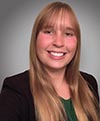 Liliana Haus – I currently am a senior Mechanical Engineering at the University of Texas at Dallas, where I am a member of the Collegium V Honors College, as well as undergraduate research assistant. I am enrolled in a program that allows me to take graduate classes during my undergraduate degree. Because of this, when I graduate with my bachelor’s degree in the Spring, I will also be halfway through a master’s degree. In the Fall, I intend to return to the University of Texas at Dallas to complete my master’s degree and continue my research in renewable wave energy. I have worked in a renewable energy systems dynamics lab since Summer of 2018. My research involves modeling the structural dynamics of wave energy converters to aid in the development of more advanced controls systems such that one day, wave energy may serve as a feasible energy solution.
Liliana Haus – I currently am a senior Mechanical Engineering at the University of Texas at Dallas, where I am a member of the Collegium V Honors College, as well as undergraduate research assistant. I am enrolled in a program that allows me to take graduate classes during my undergraduate degree. Because of this, when I graduate with my bachelor’s degree in the Spring, I will also be halfway through a master’s degree. In the Fall, I intend to return to the University of Texas at Dallas to complete my master’s degree and continue my research in renewable wave energy. I have worked in a renewable energy systems dynamics lab since Summer of 2018. My research involves modeling the structural dynamics of wave energy converters to aid in the development of more advanced controls systems such that one day, wave energy may serve as a feasible energy solution.
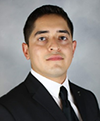 Jonathan E. Acosta – Born and raised in El Paso, TX where I attended the University of Texas at El Paso. I graduated with a Bachelor’s of Science in Mechanical Engineering, and I was involved with extra-curricular activities. I was in Pi Tau Sigma Mechanical Engineering Honor Society and Society of Automotive Engineers (SAE). For SAE, I participated in two design groups, BAJA and AERO which focused on designing and building an off-road car and remote-controlled airplanes, respectively. After graduating, I came to Los Alamos National Laboratory to work as a Post Bachelors Student Intern which is what I’m doing right now. My current projects are involved with heat pipes for nuclear applications. I run calculations and analyses while researching effective ways to improve heat pipes with my mentor. After completing my post bachelor’s student term, I will continue my academic career in grad school to earn my master’s degree in mechanical engineering. Outside of work, I like to travel, play the guitar, and watch films.
Jonathan E. Acosta – Born and raised in El Paso, TX where I attended the University of Texas at El Paso. I graduated with a Bachelor’s of Science in Mechanical Engineering, and I was involved with extra-curricular activities. I was in Pi Tau Sigma Mechanical Engineering Honor Society and Society of Automotive Engineers (SAE). For SAE, I participated in two design groups, BAJA and AERO which focused on designing and building an off-road car and remote-controlled airplanes, respectively. After graduating, I came to Los Alamos National Laboratory to work as a Post Bachelors Student Intern which is what I’m doing right now. My current projects are involved with heat pipes for nuclear applications. I run calculations and analyses while researching effective ways to improve heat pipes with my mentor. After completing my post bachelor’s student term, I will continue my academic career in grad school to earn my master’s degree in mechanical engineering. Outside of work, I like to travel, play the guitar, and watch films.
Project Description
Mentors: Bridget Martinez, David Mascareñas, Pulak Nath, Jennifer Harris, Kent Coombs
Students: Lauren Schneider, William Anderson, Richard Yeong
This project will focus on the development of multi-modal, high-resolution unsupervised machine learning approach applied to video of calcium transport imaging. The purpose of which is to study the electro-mechanical phenomena of cardiac automaticity which allows for individual motions of heart cells (cardiac myocytes) to generate proper cardiac contraction, which is automatic and synchronized. The results of this study will find its utility in potentially differentiating between cardiac myocytes that are in electro-mechanical synchrony and those which are not – a useful assessment when considering accessory pathways and subsequent pathology (described below). Full-field, high-resolution, anomaly detection methods for non- contact, full-field electro-mechanical dynamics of cardiac myocytes currently do not exist. This work will be enabled by recent advances in the LANL Engineering Institute in unsupervised machine learning algorithms for extracting high resolution dynamic mode shapes from video of vibrating structures. It also leverages LANL’s artificial organ program - Advanced Tissue- engineered Human External Network Analyzer (ATHENA) team work on calcium imaging of cardiac myocytes.
Project Team
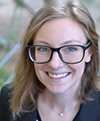 Lauren Schneider – I am a first year Masters candidate studying computer science at Portland State University. I received her B.S. in Mathematics from the University of Wisconsin-Madison. Currently, I work on a DNA computing project as part of PSU’s Teuscher Lab. My research involves using genetic algorithms to find chemical reaction networks with learning capabilities. When away from the computer, I enjoy endurance sports like running, cycling, and Nordic skiing.
Lauren Schneider – I am a first year Masters candidate studying computer science at Portland State University. I received her B.S. in Mathematics from the University of Wisconsin-Madison. Currently, I work on a DNA computing project as part of PSU’s Teuscher Lab. My research involves using genetic algorithms to find chemical reaction networks with learning capabilities. When away from the computer, I enjoy endurance sports like running, cycling, and Nordic skiing.
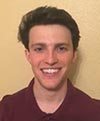 William Anderson – I am a junior studying biomedical engineering at Arizona State University, where I am a member of Engineers Without Borders and the Biomedical Engineering Society. I am also an undergraduate teaching assistant for a lower division biomedical engineering class. I am interested in dynamics research to pursue a career creating solar panel systems for communities in need. I am currently performing research in a neuroimaging laboratory. In my spare time I enjoy hiking, backpacking, rock climbing, swimming and weight lifting.
William Anderson – I am a junior studying biomedical engineering at Arizona State University, where I am a member of Engineers Without Borders and the Biomedical Engineering Society. I am also an undergraduate teaching assistant for a lower division biomedical engineering class. I am interested in dynamics research to pursue a career creating solar panel systems for communities in need. I am currently performing research in a neuroimaging laboratory. In my spare time I enjoy hiking, backpacking, rock climbing, swimming and weight lifting.
 Li-Ming Richard Yeong – I am currently a third-year Mechanical Engineering student at the University of California, Riverside. In college, I teach general physics to undergraduate students as a Supplemental Instruction (SI) Leader and work on building an autonomous submarine for the RoboSub project. In my materials science lab, I conduct research on powder metallurgy for metal Additive Manufacturing (MAM). Specifically, I am studying the effects of powder morphology and other characteristics from spreadability and laser sintering. Other than academics, I enjoy cooking, hiking, traveling, and drinking boba milk tea.
Li-Ming Richard Yeong – I am currently a third-year Mechanical Engineering student at the University of California, Riverside. In college, I teach general physics to undergraduate students as a Supplemental Instruction (SI) Leader and work on building an autonomous submarine for the RoboSub project. In my materials science lab, I conduct research on powder metallurgy for metal Additive Manufacturing (MAM). Specifically, I am studying the effects of powder morphology and other characteristics from spreadability and laser sintering. Other than academics, I enjoy cooking, hiking, traveling, and drinking boba milk tea.
Project Description
Mentors: Eric Flynn, Adam Wachtor, Nick Lieven
Students: Jessica Chan, Ferrill Rushton, Eugene Lin
Phase-sensitive vibration measurements, such as those used for modal analysis, wave propagation studies, and structural health monitoring, require precise time synchronization between sensors. However, time synchronization across multiple, spatially distributed data acquisition units in GPS- and/or radio-denied environments is an ongoing challenge.
The US power grid is divided into three interconnections: Eastern, Western, and Texas. Throughout each interconnection, the voltage waveform is nearly identical, operating at a nominal 60 Hz. However, the actual frequency varies by tens of millihertz over the course of a minute and up to hundreds of millihertz over the course of day. Hypothesis: The pattern of variation in power grid frequency, which should be identically observed at any measurement point within an interconnection, can serve as a common reference signal for time-synchronizing distant vibration measurement systems.
Project Team
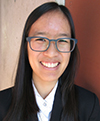 Jessica Chan – I am a rising senior at the University of California, San Diego majoring in Structural Engineering with a focus in Aerospace. I am the Project Manager and an airframe lead for Triton UAS, an autonomous airplane student project team that competes in the annual SUAS AUVSI competition. I also work as an assistant at a lab on campus that focuses on aerospace composites. After completing my undergraduate degree, I plan on continuing on to graduate school. When I’m not studying, you can find me hiking around beautiful La Jolla, trying new foods, and catching up with friends.
Jessica Chan – I am a rising senior at the University of California, San Diego majoring in Structural Engineering with a focus in Aerospace. I am the Project Manager and an airframe lead for Triton UAS, an autonomous airplane student project team that competes in the annual SUAS AUVSI competition. I also work as an assistant at a lab on campus that focuses on aerospace composites. After completing my undergraduate degree, I plan on continuing on to graduate school. When I’m not studying, you can find me hiking around beautiful La Jolla, trying new foods, and catching up with friends.
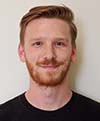 Ferrill Rushton – I am a senior studying Electrical Engineering at University of California – San Diego, where I am also a member of Eta Kappa Nu Engineering Honors Society, a project lead for Engineers for Exploration, and a tutor in the Electrical and Computer Engineering Tutor Center. I am currently involved in researching cost-effective hand-held 3-D mapping systems for small tunnels and caves to be used by archaeologists. In my free time I enjoy hiking, rock climbing, playing board games, and watching Star Trek.
Ferrill Rushton – I am a senior studying Electrical Engineering at University of California – San Diego, where I am also a member of Eta Kappa Nu Engineering Honors Society, a project lead for Engineers for Exploration, and a tutor in the Electrical and Computer Engineering Tutor Center. I am currently involved in researching cost-effective hand-held 3-D mapping systems for small tunnels and caves to be used by archaeologists. In my free time I enjoy hiking, rock climbing, playing board games, and watching Star Trek.
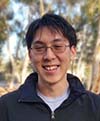 Eugene Lin – I am a Junior student studying Mechanical Engineering at University of California, San Diego. I am on the board of UCSD’s Association of Mechanical Engineers, and also involved in building a solar car. I also help research under Professor Nicholas Gravish in series-elastic wing dynamics. Outside of school, I enjoy hiking, playing video games, folding modular origami, and talking to my friends.
Eugene Lin – I am a Junior student studying Mechanical Engineering at University of California, San Diego. I am on the board of UCSD’s Association of Mechanical Engineers, and also involved in building a solar car. I also help research under Professor Nicholas Gravish in series-elastic wing dynamics. Outside of school, I enjoy hiking, playing video games, folding modular origami, and talking to my friends.
Project Description
Mentors: Garrison Flynn, John Schultze, Stuart Taylor
Students: Manuel Serrano, Tim Shenouda, Nadim Bari
Vibration tests in a controlled laboratory setting are typically used to qualify systems for deployment in their real-life environments. System complexity often leads to increased difficulty qualifying specific components. Real-time hybrid substructuring (RTHS) is a methodology for interfacing physical experiments with numerical simulations in real-time to improve the accuracy of dynamic testing. RTHS is traditionally used in early stage design of systems with the physical substructure being a difficult to model component and the remainder of the system being the numerical substructure. This project will use RTHS in the opposite fashion to better inform component qualification tests. In this project, the main system will serve as the physical substructure and the component of interest will be numerically modeled. This approach allows for effects of uncertainty due to jointed connections to be represented numerically by probabilistic stiffness and damping coefficients in the numerical substructure. The numerical substructure will be a predictive tool to determine if a component is reaching or exceeding a desired threshold, with quantifiable uncertainty, thus providing important feedback to vibration inputs of the physical substructure.
Project Team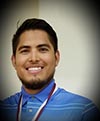 Manuel Serrano – I study Mechanical Engineering at New Mexico State University. I was raised in Hatch, NM just north of Las Cruces. The village has a population of about 1,500 residents and widely known around the state for its Green and Red Chile. Being such a small village, the economy is largely centered around farming and agriculture related work, which is what I grew up doing at a very young age. I am consistently trying to better myself by being a part of collaborative projects and surrounding myself with positive and influential individuals.
Manuel Serrano – I study Mechanical Engineering at New Mexico State University. I was raised in Hatch, NM just north of Las Cruces. The village has a population of about 1,500 residents and widely known around the state for its Green and Red Chile. Being such a small village, the economy is largely centered around farming and agriculture related work, which is what I grew up doing at a very young age. I am consistently trying to better myself by being a part of collaborative projects and surrounding myself with positive and influential individuals.
I enjoy spending a lot of time with my colleagues at New Mexico State and collaborating with other students in research related tasks. In my spare time I enjoy mountain biking, learning to play the guitar, and spending time with family. Currently my research interest is the modeling and application of micro- and nano-gyroscopes. As well as, the study of piezoelectric and electrostatic energy harvesting technologies that can be integrated into micro/Nano gyroscope designs.
I am honored to have been selected for the 20th editions of the Los Alamos Dynamics Summer School Program. I know that the technical skills gained in research and career development from this experience will be a highlight of my life for years to come.
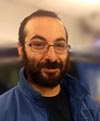 Safwat ‘Tim’ Shenouda – I am a senior mechanical engineering student at North Carolina Agricultural and Technical State University who will be attending graduate school in the fall. I am a member of the SAE Autodrive team where we are converting a normal 2017 Chevy Bolt into an autonomous vehicle. I’ve experimented with soft robotics, additive manufacturing, and worked part time in a research facility which specializes in sandwich composites. Outside of school, I enjoy skateboarding, disc golf, and I play bass in a reggae band.
Safwat ‘Tim’ Shenouda – I am a senior mechanical engineering student at North Carolina Agricultural and Technical State University who will be attending graduate school in the fall. I am a member of the SAE Autodrive team where we are converting a normal 2017 Chevy Bolt into an autonomous vehicle. I’ve experimented with soft robotics, additive manufacturing, and worked part time in a research facility which specializes in sandwich composites. Outside of school, I enjoy skateboarding, disc golf, and I play bass in a reggae band.
 Nadim Bari – I am from Detroit, MI and graduated from University of Michigan (Ann Arbor) where I studied Mechanical Engineering and Mathematics. I served as a supplemental instruction leader in math and physics for the college of engineering and have done so since my freshman year. My research interests are in the field of Computational Mechanics, specifically in the application of Finite Element Methods. I have a history of working in higher education and advanced research industries. I also love to travel and stay active.
Nadim Bari – I am from Detroit, MI and graduated from University of Michigan (Ann Arbor) where I studied Mechanical Engineering and Mathematics. I served as a supplemental instruction leader in math and physics for the college of engineering and have done so since my freshman year. My research interests are in the field of Computational Mechanics, specifically in the application of Finite Element Methods. I have a history of working in higher education and advanced research industries. I also love to travel and stay active.
Project Description
Mentors: Christopher Tilger, Michael Murphy, Michael Bowden
Students: Ethan Billingsley, Yolnan Chen, Robert Billette
The shock wave image framing technique (SWIFT) developed at LANL is a versatile flow- visualization diagnostic that allows real-time ultra-high-speed capture of explosive-driven shock waves in transparent witness media. Recent advances in data-analysis techniques for detonator and bare-explosive loading on poly(methyl methacrylate) (PMMA) samples have shown that unique one-dimensional shock-wave trajectories can be defined and used to obtain accurate shock kinematics along the charge centerline. An extension of the analysis to off-centerline regions is needed to attempt performance characterization across the working surfaces of explosive components. This need offers a unique inverse-design problem that favors creative solutions within the physics-based constraints of compressible fluid mechanics, similarity analysis, and shock physics.
Project Team
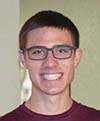 Ethan Billingsley – I am a senior at New Mexico State University studying Mechanical Engineering. My current research is focused on the development of an aerial-aquatic drone capable of diving directly from the air into water and performing a water-to-air exit. This drone design will be based on the gannet, a bird which is able to efficiently perform these techniques. I am also planning to participate in the Masters Accelerated Program at NMSU. My hobbies include building mechanical model kits, running, and spending time with friends and family.
Ethan Billingsley – I am a senior at New Mexico State University studying Mechanical Engineering. My current research is focused on the development of an aerial-aquatic drone capable of diving directly from the air into water and performing a water-to-air exit. This drone design will be based on the gannet, a bird which is able to efficiently perform these techniques. I am also planning to participate in the Masters Accelerated Program at NMSU. My hobbies include building mechanical model kits, running, and spending time with friends and family.
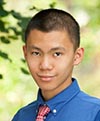 Yolnan Chen – I am a Junior studying Mechanical Engineering at Rose-Hulman Institute of Technology, where I also serve as corresponding Secretary of Tau Beta Pi, and Treasurer for the Rose-Hulman Efficient Vehicles Team. Currently my research interests include fluid dynamics, controls, finite element analysis, and signal processing. Outside of academics, I enjoy playing the guitar, swimming, and playing video games with friends.
Yolnan Chen – I am a Junior studying Mechanical Engineering at Rose-Hulman Institute of Technology, where I also serve as corresponding Secretary of Tau Beta Pi, and Treasurer for the Rose-Hulman Efficient Vehicles Team. Currently my research interests include fluid dynamics, controls, finite element analysis, and signal processing. Outside of academics, I enjoy playing the guitar, swimming, and playing video games with friends.
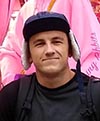 Robert Billette – I am from the great mitten state of Michigan, born and raised in the small town of Auburn. I’m a senior studying electrical engineering and physics at Michigan State University. I spent my last semester on an amazing exchange to the Hong Kong University of Science and Technology. In my sophomore year I had an internship doing power distribution for a large chemical company. I hated it. I decided I wanted to direct my interests more towards research instead of manufacturing. I quit that job and started a research position at MSU, where I have been designing and prototyping AUVs and other autonomous vehicles, and I love it! My idea of fun is pretty much anything outdoors; mountain biking, swimming, running, hiking, skiing, and scuba diving. I’m an avid traveler, and I also play piano, guitar, and write music.
Robert Billette – I am from the great mitten state of Michigan, born and raised in the small town of Auburn. I’m a senior studying electrical engineering and physics at Michigan State University. I spent my last semester on an amazing exchange to the Hong Kong University of Science and Technology. In my sophomore year I had an internship doing power distribution for a large chemical company. I hated it. I decided I wanted to direct my interests more towards research instead of manufacturing. I quit that job and started a research position at MSU, where I have been designing and prototyping AUVs and other autonomous vehicles, and I love it! My idea of fun is pretty much anything outdoors; mountain biking, swimming, running, hiking, skiing, and scuba diving. I’m an avid traveler, and I also play piano, guitar, and write music.
Project Description
Mentors: Alessandro Cattaneo, Jeffery Tippman, David Mascareñas
Students: Chad Samuelson, Christopher Whitworth, Caitrin Duffy-Deno
This project focuses on the development of visio-acoustic data fusion techniques to bring together the complementary advantages of acoustics and video-based structural dynamics to enable new structural characterization techniques. Acoustic arrays have found great utility for remotely localizing radiators of sounds generated from faulty equipment. One of the major challenges associated with acoustic techniques is that their ability to discriminate between sources closely spaced together is limited by the wavelength of the sound in air. In the last few years high- resolution, full-field structural identification techniques from video of vibrating structures have been developed. These techniques have demonstrated very high spatial-discrimination capabilities. The challenge with using imagers to capture acoustic radiators is that acoustic signals generally occur in the kHz range which in many cases requires the use of powerful illumination of a scene in order to receive enough photons at the imager to capture structural dynamics.
The LANL Engineering Institute has shown that full-field, high resolution mode shapes can be captured using imagers sampling both sub-Nyquist as well as in a compressive sampling mode. We speculate that it may be possible to use measurements from an acoustic array to inform an adaptive sampling scheme for an imager so that relatively low-speed cameras can be used to perform high-spatial resolution discrimination of acoustic radiators. The focus of this project is the development of the data fusion techniques for combining measurements from acoustic arrays and imagers. To date imagers are only used in conjunction with acoustic arrays for visualization purposes. In this work we aim to intimately couple high-frequency acoustic information with high- resolution imagers in a complementary fashion to mitigate the shortcomings associated with each. Visio-acoustics could enable new capabilities for characterizing the health of machinery and structures.Project Team
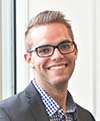 Chad Samuelson – I am a Junior studying Mechanical Engineering with a Computer Science Minor at Brigham Young University, where I participate as a member of the BYU’s Mars Rover team and the Mechatronics Club. I also work as a physics tutor. On the MARS Rover Team, I design 3D models and manufacture our science module components which allow the robot to collect and analyze soil samples. I also wired and programmed the module to accurately take repetitive measurements autonomously. I plan to attend graduate school studying Robotics Engineering and then work in the self-driving cars industry. Outside of school, I love running, racquetball, playing the piano, and just about any outdoor activity.
Chad Samuelson – I am a Junior studying Mechanical Engineering with a Computer Science Minor at Brigham Young University, where I participate as a member of the BYU’s Mars Rover team and the Mechatronics Club. I also work as a physics tutor. On the MARS Rover Team, I design 3D models and manufacture our science module components which allow the robot to collect and analyze soil samples. I also wired and programmed the module to accurately take repetitive measurements autonomously. I plan to attend graduate school studying Robotics Engineering and then work in the self-driving cars industry. Outside of school, I love running, racquetball, playing the piano, and just about any outdoor activity.
 Christopher Whitworth – I am a Senior currently pursuing both a Bachelor’s and a Master’s Degree in Mechanical Engineering through the Fast-Track Program at The University of Texas at Dallas. I am extremely passionate about finding ways to create and advance sustainable technology in order to preserve our natural resources without compromising our way of life. Currently, I am the founding member of UTD Engineers Without Borders, an organization I truly believe in because their primary focus is on being of service and building a better world through engineering projects that help empower communities.
Christopher Whitworth – I am a Senior currently pursuing both a Bachelor’s and a Master’s Degree in Mechanical Engineering through the Fast-Track Program at The University of Texas at Dallas. I am extremely passionate about finding ways to create and advance sustainable technology in order to preserve our natural resources without compromising our way of life. Currently, I am the founding member of UTD Engineers Without Borders, an organization I truly believe in because their primary focus is on being of service and building a better world through engineering projects that help empower communities.
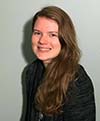 Caitrin (Katie) Duffy-Deno – I am a junior at UCSD majoring in Mechanical Engineering. This past summer I assisted a mechanical engineering PhD student with his research on piezoelectric polymers. I also participated in a microcontroller club last school year where I learned how to use Arduinos. In my free time I like to learn languages, play the drums, cook and stay active.
Caitrin (Katie) Duffy-Deno – I am a junior at UCSD majoring in Mechanical Engineering. This past summer I assisted a mechanical engineering PhD student with his research on piezoelectric polymers. I also participated in a microcontroller club last school year where I learned how to use Arduinos. In my free time I like to learn languages, play the drums, cook and stay active.
Selected Guest Lectures
Phil Cornwell
Professor of Mechanical Engineering
Rose Hulman Institute of Technology
In this talk, Dr. Cornwell will discuss how to give effective oral presentations using a type of slide design called the assertion-evidence approach. In this approach, the presenter is required to explicitly identify what messages (assertions) he or she is trying to make and the evidence to support these assertions. The information in this talk is based on the work of Dr. Michael Alley from Penn State.
Curtt Ammerman
LANL, Q-15
Los Alamos National Laboratory is the nuclear design agency responsible for the B61-12 Life Extension Program (LEP). The term “life extension program” means a program to repair/replace components of a nuclear weapon to ensure its ability to meet military requirements. By extending the life, or time that a weapon can safely and reliably remain in the stockpile without having to be replaced or removed, the National Nuclear Security Administration (NNSA) is able to maintain a credible nuclear deterrent without producing new weapons or conducting new underground nuclear tests. This LEP will consolidate multiple B61 mods, replace aging components, and extend the lifetime of the B61 for an additional 20 to 30 years. The LEP will complete a first production unit no later than the end of FY2020. This presentation will provide a brief overview of the B61LEP, and will dive more deeply into the testing and qualification activities that are being conducted to ensure that the B61-12 meets its requirements to be safe and reliable.
Nikolaos Dervilis
Dynamics Research Group, Department of Mechanical Engineering
University of Sheffield
The use of offshore wind farms has been growing in recent years, especially in Europe. United Kingdom is presenting a geometrically-growing interest in exploring and investing in such offshore power plants as the country's water sites offer impressive wind conditions. The new generation of offshore wind turbines shall have blades that will exceed 100m and soon will reach 150m in size (15MW wind turbine PM generators). This talk will give an overview of offshore wind turbines and farms.
The cost of an offshore wind farm is relatively high, and therefore their reliability is crucial if they ever need to be fully integrated into the energy arena.
In turn, this talk will present an overview of current monitoring trends for wind turbines (WTs) and will try to address the motivation and the effectiveness of Structural Health Monitoring (SHM) and machine learning applications for WTs, as well as, the idea of intelligent
WT.
François Hemez
Lawrence Livermore National Laboratory
Verification and Validation (V&V) refers to a broad range of activities that are carried out to provide evidence that measurements and predictions are credible and scientifically defendable. These lectures introduce the main concepts of V&V and illustrate how various V&V activities can be carried out for engineering applications. V&V activities include software quality assurance, code and calculation verification, data analysis and archiving, sensitivity analysis, model calibration, and the quantification of uncertainty. The cornerstone of V&V is threefold with, first, showing whenever possible that numerical predictions are accurate relative to physical data over a range of settings or operating conditions; second, quantifying the sources and levels of uncertainty; and, third, demonstrating that predictions are robust, that is, insensitive, to the modeling assumptions and lack-of-knowledge. Examples are presented in solid mechanics, transient response of structures, and shock physics.
Saryu Fensin
LANL, MST-8
For ductile metals, the process of dynamic fracture occurs through nucleation, growth and coalescence of voids. For high purity single-phase metals, it has been observed by numerous investigators that voids tend to heterogeneously nucleate at grain boundaries and all grain boundaries are not equally susceptible to void nucleation. However, the reasons behind this observation is not fully understood. It is reasonable to assume though that grain boundary structure and its affect on related properties must play a key role in understanding this deterministic relationship. In this work we explore grain boundaries properties like energy and excess volume, in addition to its interactions with dislocations and investigate any relationship it might have with dynamic fracture. We will attempt to compare the mechanisms behind void nucleation in FCC (Cu) and BCC (Ta) materials by using molecular-dynamics simulations.
Nick Lieven
University of Bristol
Prof Lieven’s talk will explore the extreme dynamic behavior of aircraft and their related systems. A particular focus will be on the physical factors which lead to flutter and aircraft instability. Although flutter can be an entirely predictable phenomenon there is an increasing awareness that such aeroelastic instabilities can be caused by structural non-linearities and human intervention. The talk will explain how these factors can interact in a potentially destructive way and what technologies and design modifications can be deployed to mitigate against this behavior. The talk will consider both the modelling aspects of aircraft non-linearities and the practical considerations associated with flight testing and – ultimately – flight safety.
Amy Regan
LANL, ISR-5
LANL satellite engineering comprises a broad set of disciplines working together to bring science ideas to fruition. ISR Division’s mission is to create, deliver, support and exploit innovative sensing systems for space-based, airborne and ground-based applications to address critical national security and scientific challenges. LANL has delivered more than 1400+ sensors on 400+ instruments on 60+ satellites. This talk will discuss the various engineering challenges to putting hardware in space.



